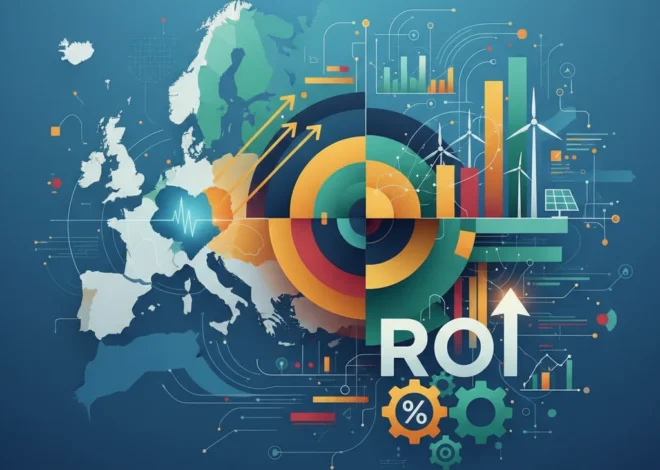
The Pacific Gambit: Decoding the Economic War Behind the US Campaign Against Narco-Terrorism
In a move that signals a significant strategic expansion, the United States has intensified its campaign against international drug traffickers, extending its operational theater to the vast expanse of the Pacific Ocean. Recent reports confirmed by the US Defence Secretary highlight the kinetic nature of this new front, with strikes on vessels resulting in the deaths of five alleged ‘narco-terrorists’, as reported by the Financial Times. While the headlines focus on military action, the real story for investors, business leaders, and financial professionals lies beneath the surface. This is not merely a law enforcement action; it is a new chapter in a complex economic war, with profound implications for global finance, supply chain stability, and the very architecture of the international banking system.
To understand the stakes, we must look beyond the naval patrols and see the invisible, multi-trillion-dollar financial currents that power these illicit empires. The fight against narco-terrorism is increasingly being waged not just on the high seas, but on the digital ledgers of the global economy, where the worlds of high finance and high crime collide.
The Shadow Superpower: Sizing Up the Illicit Global Economy
The global drug trade is not a fringe activity; it is a shadow superpower with its own sophisticated logistics, management, and, most importantly, financial infrastructure. The United Nations Office on Drugs and Crime (UNODC) has estimated that the illicit drug market is one of the world’s most valuable criminal enterprises. For context, the annual revenue generated is often compared to the GDP of entire nations. According to some estimates, the value of transnational crime, with drug trafficking as its largest component, could be as high as $1.6 trillion to $2.2 trillion per year (source).
This colossal flow of capital has a corrosive effect on the global economy. It fuels corruption, destabilizes emerging markets, and creates parallel financial systems that operate beyond the reach of regulators. For legitimate businesses and investors, this creates an unpredictable and high-risk environment. The expansion of counter-narcotics operations into the Pacific, a critical artery for world trade, underscores a new reality: the stability of our global supply chains is now directly linked to the success of this fight against a well-funded and highly adaptive criminal enterprise.
The Green Paradox: Why the Netherlands' Renewable Success Is a Critical Warning for Global Investors
From Bullets to Blockchain: The Financial Technology Frontline
Modern narco-trafficking organizations operate like multinational corporations. Their most critical division is not logistics or enforcement, but finance. The primary challenge for these groups is not producing or moving their product, but laundering the proceeds. This is where the battle shifts from the ocean to the servers and ledgers of the global banking and financial system.
Traditionally, cartels have relied on complex schemes involving shell corporations, trade-based money laundering, and complicit financial institutions to clean their money. However, the rise of financial technology has opened up new fronts in this war. On one hand, cryptocurrencies and decentralized finance (DeFi) platforms offer a veneer of anonymity that is attractive to criminal elements. The ability to move millions of dollars across borders in seconds with a few clicks presents a formidable challenge to regulators.
On the other hand, the immutable and transparent nature of blockchain technology provides an unprecedented tool for law enforcement. Every transaction is recorded on a public ledger, and specialized forensic firms can now trace the flow of illicit funds with remarkable accuracy. This has led to a technological arms race. As agencies develop sophisticated AI-powered tracking tools, criminal syndicates are exploring privacy coins and “mixer” services to obscure their financial trails. This cat-and-mouse game has significant implications for the future of fintech regulation and the ongoing debate over privacy versus security in our digital financial lives.
Geopolitical Risk and the Investor’s Calculus
Why the Pacific now? The move is inextricably linked to the broader US strategic pivot to the Indo-Pacific region. The same sea lanes that carry trillions of dollars in legitimate trade are also the highways for illicit goods. The presence of narco-submarines and smuggling vessels in these waters represents a direct threat not only to national security but also to economic stability. Any escalation in military activity, even when targeting criminals, can create jitters in the stock market and impact sectors reliant on maritime trade.
For those engaged in investing and trading, this development warrants close attention:
- Defense and Surveillance Sector: Companies specializing in maritime surveillance technology, unmanned aerial vehicles (UAVs), and naval hardware may see increased government contracts. This is a direct, first-order effect.
- Shipping and Logistics: Increased patrols and interdictions could lead to delays, higher insurance costs (war risk premiums), and route alterations for commercial shipping lines, impacting their profitability and stock performance.
- Regional Stability: The presence of powerful, non-state actors like cartels in a geopolitically sensitive region adds a layer of complexity and risk, potentially affecting foreign direct investment and the sovereign debt ratings of smaller Pacific nations caught in the crossfire.
Below is a simplified breakdown of the economic costs associated with both the problem and the solution, highlighting the immense financial stakes involved.
| Economic Factor | Impact of Illicit Drug Trade | Cost of Counter-Narcotics Efforts |
|---|---|---|
| Direct Economic Output | Contributes hundreds of billions to a global shadow economy. | The U.S. federal government alone requests over $40 billion annually for drug control (source). |
| Impact on Legitimate Economy | Distorts markets, fuels corruption, and increases security costs for businesses. | Diverts taxpayer funds from other sectors like infrastructure, education, and healthcare. |
| Financial System Impact | Requires vast money laundering operations, corrupting parts of the banking sector. | Drives massive investment in financial regulation, compliance (AML/KYC), and enforcement technology. |
| Human Capital Cost | Loss of productivity due to addiction, violence, and incarceration. | Personnel costs for military, law enforcement, and intelligence agencies. |
Geopolitical Tremors: What US Military Threats in Venezuela Mean for Global Markets
The Future: A Battle Waged on Economic and Digital Battlefields
The strikes in the Pacific are a clear indication that the nature of this conflict is changing. While tactical military operations will continue to grab headlines, the strategic victory will likely be determined in the realms of economics and technology. The future of this fight will involve greater public-private partnerships, with governments collaborating with fintech innovators and blockchain analytics firms to “follow the money” in real-time.
Advanced AI will be deployed to detect anomalous patterns in global trading and financial transactions that signal trade-based money laundering. Central Bank Digital Currencies (CBDCs) could offer greater transparency, making illicit finance more difficult, though this raises significant privacy concerns. The effectiveness of these future strategies will have a direct impact on the global economy, either by successfully crippling these criminal financial empires or by driving them further underground into more sophisticated and harder-to-trace methods.
In conclusion, the US campaign in the Pacific is a powerful reminder that some of the greatest threats to global stability are hybrid in nature, blending criminal enterprise with geopolitical maneuvering and financial warfare. For the astute observer in the world of finance and business, the key is to look past the military hardware and focus on the financial software. The flow of capital, both legal and illegal, will ultimately tell the true story of this evolving global conflict. Understanding these undercurrents is no longer just a matter of security analysis; it is a fundamental component of sound economic forecasting and prudent investing in an increasingly complex world.
The Trillion-Dollar Question: Is High Public spending the Real Threat to Our Economy?


